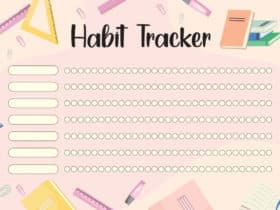There’s no worse feeling than needing an idea, but not having a single one. For someone who’s livelihood rests on generating ideas, I know this feeling well. Yet there are some techniques that can be used to make sure that we’re in the best position possible to have a great idea. Here are 15 ways that ensure you’re ready to have that big idea when you need it most.
1. Start cleaning your immediate area
Cleaning helps on multiple levels. For starters, cleaning gives you a chance to break away from your immediate workspace (like a computer), and the movement gets blood pumping through your body. In a psychological sense, cleaning also adds the benefit of removing clutter, which has a huge effect on our focus, subconscious or not.
Cleaning is by far my favorite method for getting out of a creativity slump. The second I start to become stressed, I start cleaning my desk, living room and kitchen, and by the time I’m finished I’ve got a whole slew of ideas.
2. Impose a deadline
One might think that imposing a deadline would be bad for trying to rustle up some ideas, and generally I’d agree. But deadlines can do one thing that is very important: they force you to focus on a goal. With deadlines, we know what needs to happen and we know how long we have to do it in. They give us scope and they give us perspective.
3. Use a different medium
Sometimes changing the tools or the medium you’re using to work on an idea can really make a difference. If you’re a painter, try using charcoal or pencil instead of watercolors. If you’d normally use the computer to generate ideas, try switching to paper and pen. While it may seem like a trivial change, the small change can be huge for your creativity. There’s something very freeing about switching to a different medium.
4. Define the problem clearly
Sometimes we get so lost in trying to think of ideas that we don’t focus on our objective closely enough. We just generate ideas for the sake of generating ideas. And believe me, when you reach this point it’s best to just stop and go “back to the drawing board”. We have to make sure that the problem we’re trying to solve is the only thing we’re trying to solve.
5. Surround yourself with materials
Sometimes it’s helpful to just start gathering materials that you’ll be needing. If nothing else is working, try making sure you have the materials you know you’ll need eventually. Start pulling reference materials, books, research materials, anything that might be needed. Sometimes just looking at these resources can be enough to get an idea rolling.
If gathering materials doesn’t bring any inspiration, at least you’ll be ready to start creating when the idea finally strikes.
6. Relax your breathing, cool your nerves
Ah, who doesn’t know the feeling of impending doom? The throat becomes dry, your mind frantic, beads of sweat start forming on the brow and various other body parts… it’s not fun. Not only that, but stress only makes it harder to hatch a good idea. Try using breathing techniques that relax to help you lower your heart rate and calm your nerves. It takes a clear, cool mind to generate great ideas.
Controlled breathing helps psychologically because it is at least one thing that we can control. We may not be able to control the fact that we’re drawing a blank, but if we can control things like our breathing, it gives us a small boost of confidence.
7. Create a mind map
Mind maps are an excellent way to just start putting what you know and organizing it. Sometimes organizing our thoughts can be incredibly effective in generating ideas. By creating a mind map, you’ll start to get a handle on what you know, and what you’ll need to know.
8. Ask a friend
If you’ve got a deadline looming and don’t have any inspiration at all, ask a friend for advice. Any friend. It doesn’t even matter if they know the nuances of what you’re working on at all. Explaining the problem to a friend helps you process the problem too,
Almost every idea I have, I run it by a close friend. It’s OK to ask friends for help, and believe it or not, friends like helping in return.
9. Think with your eyes wide shut
Sometimes it’s helpful to just close our eyes and push out all of the other visual distractions. It’s such a simple concept, yet it makes all the difference when you’re trying to visualize how something is going to work or look.
10. Sleep on it
Let’s take number 9 one step further and take a short little nap. The mind needs refreshing too, and if you can spare 20 minutes for a power nap, you’ll be refreshed and ready to tackle the deadline. Sometimes it’s more beneficial to spend 20 minutes taking a nap if your brain is fried. Giving your mind a chance to relax puts you in a better position to brainstorm and produce some ideas later on.
11. Don’t be afraid to use Google
It still amazes me how many “purists” there are out there when it comes to finding solutions. Here’s a little hint: There’s nothing new under the sun. Ideas are usually adaptations of other ideas. Ideas build off of one another. Someone may have already done most of the heavy lifting for you in terms of creating the prototype. It’s perfectly fine to use their work as inspiration. Just don’t steal. Nothing good comes from stealing.
12. Don’t be afraid to ask questions
When I’m freelancing for clients, I always ask what feels like way too many questions. Yet if I didn’t ask questions, I probably wouldn’t have come up with the best solution for what they were needing. Fully understanding the problem or task allows you to get a better idea of what the solution should look like.
And don’t worry about your boss (or client). They will appreciate the fact that you’re making sure you’re trying your best to understand the task at hand. (Just don’t ask questions they’ve already answered 8 times before.)
13. Crank on some tunes
Music can have a major effect on our creativity and problem solving. Studies have shown that music stimulates the parts in our brains that deal with spatial reasoning, which is a very good thing for solving problems. I find music without words like jazz or classical to be most effective, as it doesn’t distract from what I’m working on.
14. Exercise
Exercising is a great way to brainstorm. Much like cleaning, exercising gets blood pumping through your body (and especially your brian), which allows you to work through problems in a different environment. This could be walking, stretching, yoga, running, biking, or anything else that gets your body movin’.
I prefer going on a run when I’m really needing an idea. By the time I’m done I usually find myself much closer to a solution than I would have if I had stared at a computer screen instead.
15. Perspiration, not inspiration
Not really the most appetizing of any these tricks, actually forcing yourself to work on a solution is sometimes the best route. Thomas Edison once said that “Genius is 1% inspiration, and 99% perspiration.” Sometimes we just have to hunker down and force ourself to work on a solution, and come up with an idea with a little perspiration.
This happens all the time with writers. Many times the writing is a process of just grinding out words and writing to write. Eventually the perspiration will lead to inspiration.














